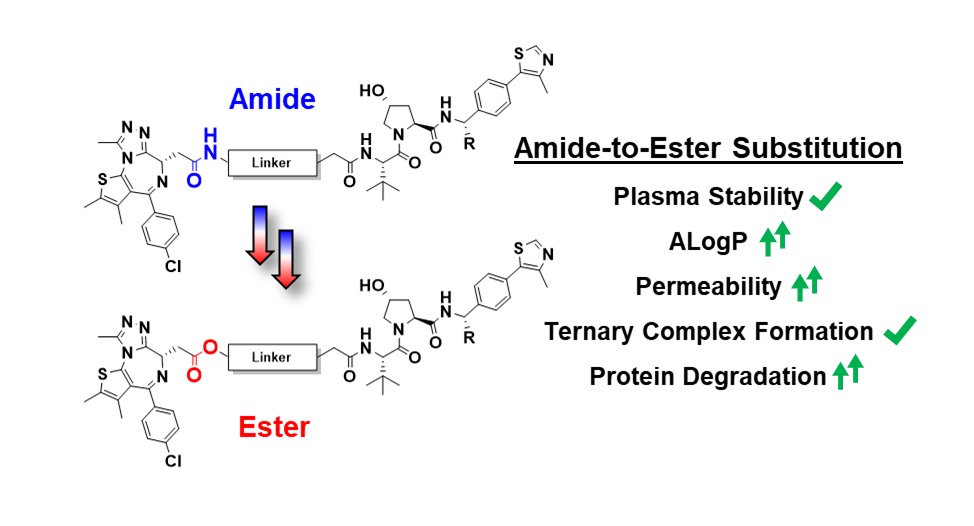
Great work by Adam and Conner in this work collaboration with Scott Lokey’s Lab!
Read the Open Access full article.
Authors: Victoria G. Klein, Adam G. Bond, Conner Craigon, R. Scott Lokey*, and Alessio Ciulli*
Title: Amide-to-Ester Substitution as a Strategy for Optimizing PROTAC Permeability and Cellular Activity
Abstract
Criteria for predicting the druglike properties of “beyond Rule of 5” Proteolysis Targeting Chimeras (PROTAC) degraders are underdeveloped. PROTAC components are often combined via amide couplings due to their reliability. Amides, however, can give rise to poor absorption, distribution, metabolism, and excretion (ADME) properties. We hypothesized that a bioisosteric amide-to-ester substitution could lead to improvements in both physicochemical properties and bioactivity. Using model compounds, bearing either amides or esters, we identify parameters for optimal lipophilicity and permeability. We applied these learnings to design a set of novel amide-to-ester-substituted, VHL-based BET degraders with the goal to increase permeability. Our ester PROTACs retained intracellular stability, were overall more potent degraders than their amide counterparts, and showed an earlier onset of the hook effect. These enhancements were driven by greater cell permeability rather than improvements in ternary complex formation. This largely unexplored amide-to-ester substitution provides a simple strategy to enhance PROTAC permeability and bioactivity and may prove beneficial to other beyond Ro5 molecules.